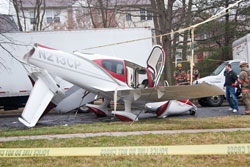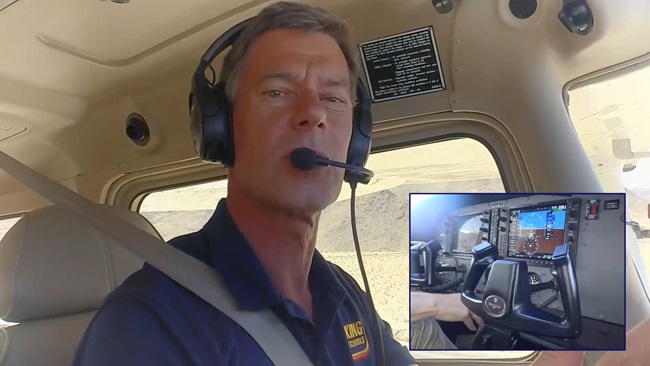 Airframe parachutes are still new enough, and installed on a small enough portion of the general aviation fleet, that manufacturers, instructors, and pilots haven’t developed hard-and-fast rules on the situations in which pilots should use them.
Airframe parachutes are still new enough, and installed on a small enough portion of the general aviation fleet, that manufacturers, instructors, and pilots haven’t developed hard-and-fast rules on the situations in which pilots should use them.
In some accidents involving parachute-equipped airplanes, pilots never pulled the red handle that fires the rocket-propelled, ballistic chutes. In others, parachutes were deployed too late, or at such high speeds, that they were ineffective. There’s also an unsettled debate about whether the presence of airframe parachutes gives pilots a false feeling of security and leads them to fly in weather conditions they wouldn’t otherwise attempt.
On Sunday, March 15, Verle Wiita, 64, an instrument-rated private pilot with about 320 total hours flying experience, became disoriented soon after leaving Montgomery County Airpark in Gaithersburg, Md. Automated weather equipment reported an overcast ceiling of 400 feet with two miles visibility at the surface, although the pilot reported the cloud layer began at about 800 feet agl. He deployed the airframe parachute on his Cirrus SR22 at the base of the clouds, and the airplane came down less than a half-mile from the airport.
No one on the ground was injured, and Wiita walked away from the accident without so much as a bump or bruise. But his airplane, a normally aspirated 2008 model with the Garmin G1000-based Perspective avionics suite, was destroyed. To date, there have been 18 parachute deployments on Cirrus aircraft, and the occupants have survived 16 of them.
Here are some of Wiita’s observations and recollections about what took place on the flight and his decision to use the airframe parachute.
“I had owned another SR22, a 2005 model, for several years before taking delivery of the new airplane in October. I had flown (the new airplane) fewer than 30 hours.
“I had read and thought a lot about the kinds of situations in which I would use the (airframe parachute). I’m convinced that you really can’t make that decision in the stress of the moment. You have to think about it and decide what you’re going to do well in advance.
“I had just taken off (from GAI) and I was entering the clouds when the (passenger) door popped open. It was a major distraction…I was hand-flying and hadn’t engaged the autopilot. I decided that I should return and land and shut the door, and I turned back to the airport.
“I hadn’t yet contacted Potomac Approach.
“The airplane then went through some unusual attitudes, climbing and descending. I got control of the airplane and, below the clouds, turned (back) toward the airport.
“I knew the (Flight Restricted Zone) was about five miles from the airport, and I was headed directly for it. I knew I was close to the airport but didn’t see it. I was flying at less than 100 knots, low, and I felt like the plane was about to enter a stall/spin. I hit the (level) button, (a Perspective feature that engages the autopilot at the touch of a button to fly wings-level) but I was thinking, ‘I don’t have time for this to work,’ and pulled the chute immediately.
“I didn’t have any second thoughts when I did it. But since then, I’ve had all kinds of second thoughts.
“At the time, circumstances all piled on top of each other: the open door, unusual attitudes, an unfamiliar airport, inclement weather, and the Washington airspace.
“I had practiced unusual attitudes in training. But in training, it’s different. You know what you’re trying to do, and you don’t have any distractions or real concerns that you’re going to crash.
“I knew the old adage: ‘aviate, navigate, communicate.’ But after this, I feel like it should be ‘aviate, aviate, aviate.’ Navigation and communication can come later.”



